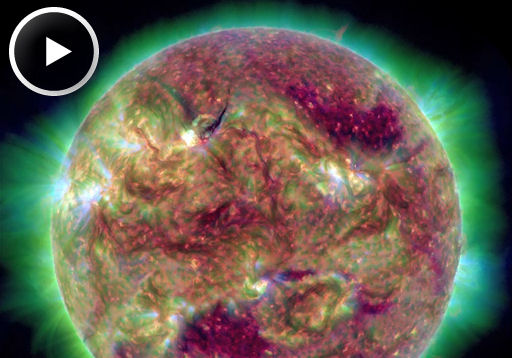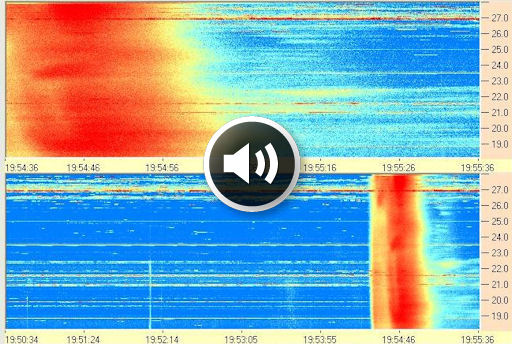SpaceWeather.com -- News and information about meteor showers, solar flares, auroras, and near-Earth asteroids
| They came from outer space--and you can have one! Genuine meteorites are now on sale in the Space Weather Store. |
DOUBLE ERUPTION (UPDATED): Sunspot AR1667 erupted this morning (Feb. 6th @ 00:21 UT), producing a double-peaked C9-class solar flare that lasted more than ten hours from beginning to end. The slowly-unfolding explosion also hurled two CMEs into space. The clouds are not heading directly for Earth, but they could deliver glancing blows to our planet's magnetic field on Feb. 9-10. High-latitude sky watchers should be alert for auroras this weekend. Solar flare alerts: text, voice.
Click to view a full-disk movie of the eruption recorded by NASA's Solar Dynamics Observatory:
A close-up of the blast site shows an inky-dark plume of plasma spiralling away from the explosion. The darkness of the material is a sign that it was extra-dense and cool relative to the surrounding atmosphere of the sun.
LOUD SOLAR RADIO BURST: Last Saturday, Feb. 2nd, the solar activity forecast called for "quiet." In fact, says amateur radio astronomer Thomas Ashcraft, "it was really loud. There were several strong solar radio emissions including one super-strong Type III burst at 1954 UT. I captured it at 28 MHz and 21.1 MHz as it totally drowned out a shortwave voice transmission." Click to listen:
The source of the burst was sunspot AR1667, which unleashed a C2.9-class solar flare just before the roar emerged from the loudspeaker of Ashcraft's radio telescope. Type III solar radio bursts are produced by electrons accelerated to high energies (1 to 100 keV) by solar flares. As the electrons stream outward from the sun, they excite plasma oscillations and radio waves in the sun's atmosphere. When these radio waves head in the direction of Earth, they make themselves heard in the loudspeakers of shortwave radios around the dayside of the planet. 


No comments:
Post a Comment